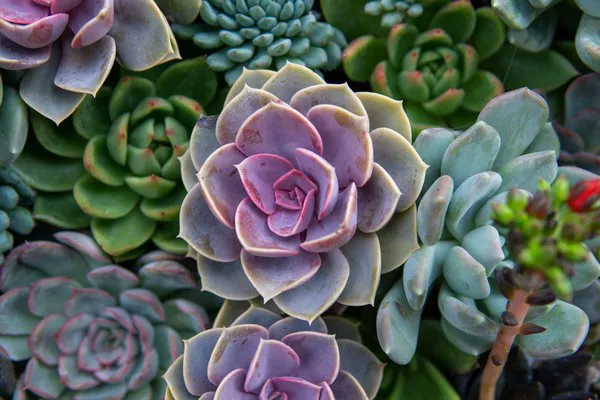Donkey Tail succulent, also known by its botanical name Sedum morganianum, is a visually captivating and popular choice among succulent enthusiasts. Its cascading stems adorned with fleshy, bead-like leaves make it a unique addition to both indoor and outdoor gardens. Like all plants, the Donkey Tail succulent requires occasional repotting to ensure its health, vitality, and aesthetic appeal. In this comprehensive guide, we will delve into the art of repotting Donkey Tail succulents, covering everything from when and why to repot, the essential tools needed, step-by-step repotting instructions, and aftercare.
1. Understanding the Need for Repotting
Repotting is a vital aspect of succulent care, ensuring the optimal growth and development of the plant. Donkey Tail succulents, specifically, require repotting for several reasons:
Root Bound Condition: Over time, the succulent’s roots may outgrow their current container, becoming tightly packed and root-bound. This hampers the plant’s access to nutrients and water, potentially leading to stunted growth.
Soil Depletion: The nutrients in the potting soil can become depleted over time. Repotting provides an opportunity to replenish the soil with fresh nutrients.
Improved Aeration and Drainage: As the succulent grows, its potting mix can become compacted, reducing aeration and drainage. Repotting allows for a healthier root environment.
Aesthetic Renewal: Repotting offers a chance to refresh the plant’s appearance, remove dead or dried leaves, and potentially propagate new plants from cuttings.
2. Determining the Right Time to Repot
Knowing when to repot your Donkey Tail succulent is crucial. Typically, these succulents should be repotted every 2-3 years, during their active growing season in spring or early summer. Signs that your plant is due for repotting include:
Roots visibly protruding from the drainage holes.
Slow growth or stunted appearance.
The plant becoming top-heavy and unstable in its current pot.
Water quickly running through the pot during watering, indicating compacted soil.
3. Essential Tools and Materials
Gather the following tools and materials before embarking on the repotting process:
New Pot: Select a pot that is 1-2 inches larger in diameter than the current pot, with drainage holes.
Potting Mix: Opt for a well-draining succulent or cactus potting mix.
Perlite or Pumice: These additives improve drainage and aeration in the soil.
Trowel or Spoon: Used for gently lifting the plant and loosening the roots.
Gloves: Protect your hands from the succulent’s spiky leaves and the soil.
Pruning Shears: For trimming any dead or overgrown stems.
Watering Can: Used to water the plant after repotting.
4. Step-by-Step Repotting Guide
Step 1: Choose the Right Time and Environment
Ensure that you are repotting during the active growing season, either in spring or early summer. Select a clean and well-lit area to work in, preferably with a surface that can be easily cleaned after the repotting process.
Step 2: Prepare the New Pot
Fill the new pot with a layer of well-draining potting mix, mixed with perlite or pumice for enhanced drainage. Leave enough space at the top for the Donkey Tail succulent to fit comfortably.
Step 3: Gently Remove the Plant
Carefully turn the current pot upside down and tap it to loosen the plant and its root ball. Gently slide the plant out, supporting the stem as you do so. If the plant is root-bound, you might need to help ease it out by gently tugging on the base of the plant.
Step 4: Inspect and Prune
Examine the roots for any signs of rot or damage. Trim away any black or mushy roots with clean pruning shears. Additionally, trim any excessively long or leggy stems to encourage new growth and maintain the plant’s compact form.
Step 5: Repot the Succulent
Place the Donkey Tail succulent in the center of the new pot, ensuring it sits at the same depth it was in the previous pot. Fill in the gaps around the plant with the prepared potting mix, gently pressing down to secure the plant.
Step 6: Water and Settle
Water the repotted succulent lightly, allowing the water to seep down and settle the soil. Avoid overwatering, as Donkey Tail succulents are sensitive to excess moisture.
Step 7: Aftercare
Place the repotted succulent in a location with bright, indirect sunlight for a few days to allow it to adjust to its new environment. Avoid direct sunlight during this acclimatization period. Resume your regular watering routine once the plant has had a chance to settle.
5. Caring for Your Repotted Donkey Tail Succulent
After repotting, it’s important to continue providing proper care to your Donkey Tail succulent:
Watering: Allow the soil to dry out between waterings. Water thoroughly, but avoid letting the plant sit in standing water.
Light: Place the succulent in bright, indirect sunlight. Too much direct sunlight can lead to sunburn on the leaves.
Temperature: Donkey Tail succulents thrive in temperatures between 60-75°F (15-24°C).
Fertilization: Feed the succulent with a diluted, balanced liquid fertilizer once a month during the growing season (spring and summer).
Pruning: Trim any dead or leggy growth to maintain the plant’s compact shape.
Conclusion
Repotting your Donkey Tail succulent is a rewarding endeavor that contributes to the long-term health and beauty of your plant. By understanding the signs that indicate the need for repotting, preparing the right tools and materials, and following the step-by-step guide provided, you can confidently undertake the repotting process. With proper aftercare and continued maintenance, your repotted Donkey Tail succulent will flourish, delighting you with its unique charm for years to come.


